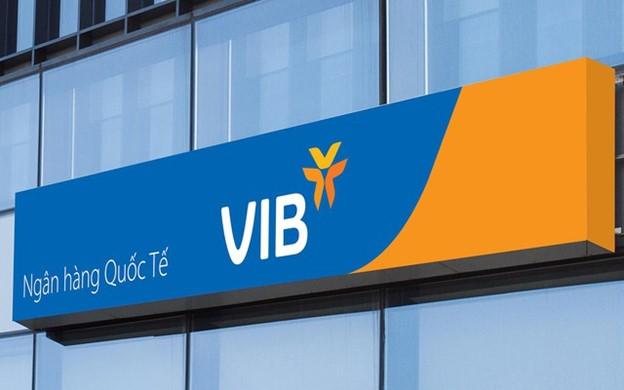Lãi hơn 4

![]()
TPBank ‘rót’ gần 64.000 tỷ đồng vào chứng khoán đầu tư
Khép lại 9 tháng đầu năm 2024, Ngân hàng TMCP Tiên Phong (TPBank, mã: TPB) đạt lợi nhuận sau thuế hơn 4.368 tỷ đồng, tăng 10% so với cùng kỳ. Tính đến 30/9/2024 nợ xấu tại TPBank vượt 5.360 tỷ đồng, tăng 28% so với đầu năm. Tỷ lệ nợ xấu tăng từ 2,05% hồi đầu năm lên 2,29%. Đặc biệt, TPBank ghi nhận khoản “nghĩa vụ nợ tiềm ẩn” hơn 55.300 tỷ đồng.
Góp một phần nhỏ vào lợi nhuận tại TPBank chính là chứng khoán đầu tư. Theo báo cáo tài chính hợp nhất quý III/2024, tính đến 30/9/2024, TPBank “đổ” hơn 63.892 tỷ đồng vào chứng khoán đầu tư, trong đó toàn bộ là chứng khoán đầu tư sẵn sàng để bán.
Trong tổng chứng khoán đầu tư của TPBank, có 12.096 tỷ đồng là chứng khoán nợ do các tổ chức kinh tế trong nước phát hành, tức trái phiếu doanh nghiệp, xấp xỉ so với đầu năm. Tuy nhiên, TPBank không giải trình chứng khoán nợ do các tổ chức kinh tế trong nước phát hành bao gồm các trái phiếu có kỳ hạn như nào, lãi suất ra sao.
 Nguồn: Báo cáo tài chính hợp nhất quý III/2024 tại TPBank.
Nguồn: Báo cáo tài chính hợp nhất quý III/2024 tại TPBank.
Thực tế, giai đoạn trước đây, TPBank là một trong những nhà băng nắm giữ lượng trái phiếu doanh nghiệp lớn. Tuy nhiên, từ năm 2023 đến nay, nhà băng này đã giảm dần lượng trái phiếu nắm giữ. Tính đến 30/9/2024 chỉ còn hơn 12.000 tỷ đồng.
Theo dữ liệu trên Sở giao dịch chứng khoán TP Hà Nội (HNX), tính từ đầu năm 2024 đến hết tháng 10, TPBank đã phát hành thành công 22 lô trái phiếu huy động hơn 16.000 tỷ đồng, kỳ hạn từ 3 năm đến 10 năm. Các lô trái phiếu tại TPBank có lãi suất cao nhất là 6,88%/năm, thấp nhất là 4,9%/năm.
Trong khi đó, năm 2023, nhà băng này cũng dồn dập phát hành thành công 26 lô trái phiếu với lãi suất tương đối cao lên tới 7,5%/năm, thấp nhất chỉ có 4 lô trái phiếu có lãi suất 5,7%/năm -5,8%/năm.
TPBank đang kinh doanh vàng ra sao?
Năm 2012, loạt ngân hàng trong đó có TPBank được Ngân hàng nhà nước (NHNN) cấp phép kinh doanh mua bán vàng miếng.
Dựa vào báo cáo tài chính có thể thấy, hoạt động kinh doanh ngoại hối trong đó có vàng được xem là một trong những nguồn thu phi tín dụng. Tuy nhiên, thu nhập từ kinh doanh vàng tại TPBank mấy năm trở lại đây không mấy nổi bật.
Giai đoạn 2019-2023, thu nhập từ “kinh doanh ngoại tệ giao ngay và vàng” tại TPBank liên tục tăng trưởng, từ 474 tỷ đồng năm 2019 lên tới 1.058 tỷ đồng năm 2022 nhưng đến năm 2023 bất ngờ giảm còn hơn 876 tỷ đồng.
Trong 9 tháng đầu năm 2024, thu nhập từ kinh doanh ngoại tệ giao ngay và vàng tiếp tục giảm đến 26% so với cùng kỳ 2023, xuống còn hơn 267 tỷ đồng.

Ở một diễn biến khác, tháng 10 vừa qua, TPBank xảy ra sự cố liên quan đến giao dịch vàng.
Theo đó, cơ quan Cảnh sát điều tra Công an TP Hà Nội đã hoàn tất kết luận điều tra vụ án tại Trung tâm giao dịch Hội sở Ngân hàng TMCP Tiên Phong (TPBank), đề nghị truy tố Nguyễn Văn Linh, cựu cán bộ kho quỹ ngân hàng, về tội “Tham ô tài sản”. Vụ việc này đã được hàng loạt cơ quan báo chí trong nước đưa tin.
Theo kết luận điều tra, Ngân hàng TPBank thành lập Kho quỹ tập trung để lưu giữ các tài sản gồm vàng, tiền, giấy tờ có giá, ấn chỉ quan trọng… Riêng với vàng, ngân hàng này chia 3 trạng thái để quản lý.
Loại một là vàng giữ hộ, TPBank nhận giữ hộ vàng SJC, DOJI có thu phí; bao gồm giữ hộ nguyên seri (khi hoàn trả sẽ nhận nguyên trạng số đã gửi) và không seri. Loại hai là vàng giao dịch (mua bán), tức vàng SJC được TPBank lưu trữ, sử dụng để giao dịch mua bán với khách hàng. Hai loại trên được Ban Quản lý kho kiểm kê hàng ngày. Loại thứ ba, vàng cầm cố, TPBank cho khách hàng vay tiền và sử dụng tài sản đảm bảo là vàng miếng SJC.
Sau khi nhận cầm cố, vàng được niêm phong theo quy định của TPBank và bảo quản trong kho tiền. Riêng loại này được kiểm kê định kỳ vào các ngày 30/6 và 31/12 hàng năm.
Linh, trong vai trò thủ quỹ, đã lợi dụng quy trình kiểm kê vàng chỉ diễn ra 2 lần một năm để thực hiện hành vi chiếm đoạt. Cụ thể, vào tháng 7/2017, Linh đã lấy 246 lượng vàng SJC từ kho và bán cho một doanh nghiệp, thu về hơn 8,8 tỷ đồng. Số tiền này sau đó được Linh chuyển vào tài khoản chứng khoán để đầu tư.
Để che giấu hành vi, Linh đã thay thế số vàng đã lấy bằng vàng cầm cố từ khách hàng khác, khiến việc kiểm kê không phát hiện ra thiếu hụt. Hành vi này kéo dài cho đến khi Linh không còn khả năng hoàn trả số vàng đã chiếm đoạt.
Ngoài ra, Linh cũng bị cáo buộc nhận giữ hộ 70 tỷ đồng từ một kế toán trưởng của ngân hàng, trong đó 40 tỷ đồng đã được trả lại, còn lại 30 tỷ đồng cùng với tiền thu được từ việc bán vàng được dùng để đầu tư vào tiền ảo và xổ số nhưng đã thua lỗ.

Nhìn từ vụ việc này và hàng loạt các vụ việc khách hàng mất tiền trong tài khoản tại các ngân hàng thời gian qua, nhiều người dân lo ngại về tính bảo mật cũng như quy trình quản lý tài sản của các ngân hàng.
Hoàng Trang
Theo tudonghoangaynay.vn Copy







